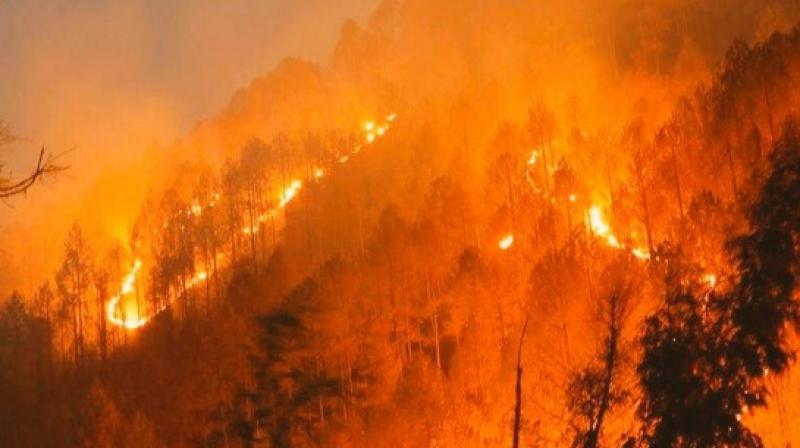Vested interests behind Uttarakhand fires

A few days ago, I sat on the verandah of the Gene Campaign field station in Orakhan in the Kumaon region of Uttarakhand, watching the forests of Mukteshwar burn. It was heart-breaking to see the fire spread. Next day, friends who were supposed to come visiting called to say they were dog tired since all of them were up all night, trying to put out the fires. The next day, driving down to Kathgodam to get the train, my heart sank as I realised the extent to which the forests were burning. From Mukteshwar to Kathgodam, there were patches of forest going up in smoke. Somebody described them as “garlands of fire”, draping the hillside.
Later, from newspapers I learnt that the fires had spread over both the Kumaon and Garhwal regions. Our district Nainital in Kumaon, as well as Tehri and Pauri in Garhwal, were apparently the worst affected. The total number of forest fires had gone up to nearly 1,100 before the interventions to control the fire began a few days ago. Once the governor stepped in to have more personnel deployed and New Delhi sent the Air Force (who else but the fauj at a time of crisis!), things began to get under control but not before a lot of damage.
Losing chunks of the Mukteshwar forest has been a big blow. Avid foresters of yesteryears tell us that the Mukteshwar forest is one of the best patches of forest in the western Himalayas. The presence of chir pine in a predominantly oak forest is an indication of degradation. When the broad leafed trees are felled, the pine moves in. Pine trees shed their needle-like leaves copiously from the start of summer and the ground is covered with a carpet of long, resin-rich, acidic pine needles. These are the main culprits of forest fires. Because of their resin, pine needles catch fire quickly.
The damage to the gorgeous Mukteshwar forest will be assessed in the coming days but the visuals predict bad news. After the fires have been put out and the damage assessed, questions must be asked about the capability and preparedness of the forest department. Sure, forest fires happen in summer and some fires are an annual feature but why did it take so long before action was taken to control the fires? It has not rained since September 2015 and the Himalayan vegetation, especially in pine areas, is like tinder.
The distressing fact is that people incharge down the line have displayed callous neglect and let the jungle burn. But there is worse: Stories abound in the villages about complicity and some of these stories have been mentioned in the media. One story is that the people in the forest department set the fires deliberately because they get extra money to put out forest fires. The other is that there is connivance between people in the forest department and the timber mafia so that forests are set on fire and, ultimately, when all is over, supposedly burnt trees in the affected blocks are auctioned off.
The third story is about the land mafia being in cahoots with the administration to grab land for commercial purposes. When the forest is burnt down, people suggest the status of the land be changed, it’s not a forest anymore and it can be sold to those who want to build hotels and resorts. Although this time, I think people may have miscalculated the fury of the fire. And then there’s a fourth story: That those who deal in pine resin and keep resin stocks in forest depots start fires to claim compensation far in excess of what they had collected and stocked. Who knows what the truth is.
An open inquiry should be held on the devastating fires that have destroyed 3,000 hectares of Uttarakhand’s forests. The biodiversity of the area has been wrecked. The perpetrators must be punished severely. Not the village lads but the mafias and those who benefit from disasters.

